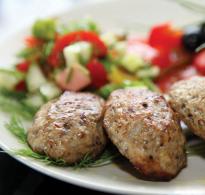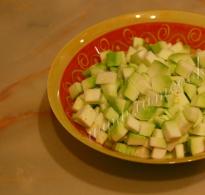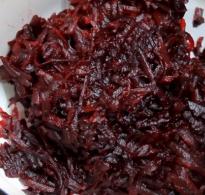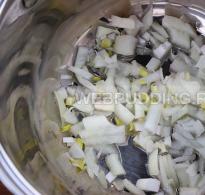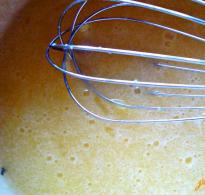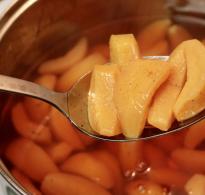Mushroom umbrella. Useful properties, how to dry and how to pickle
Umbrella mushrooms are the fourth category, which belong to the champignon family and have a very original umbrella appearance and excellent delicacy. taste qualities. Experienced mushroom pickers value them very much and consider them one of the best. Only the caps of young mushrooms can be used for food, as their flesh has a delicate, loose structure and a pleasant aroma. The legs, as well as old and large specimens, are unsuitable for food and preparations due to their rigidity.
Description of the species
The name of the species justifies itself: an adult mushroom reaches 45 cm in height, and the diameter of its outstretched cap can be more than 35 cm. In size and shape, it really looks like a child’s umbrella. Most of the slightly pubescent surface of the caps of young specimens is covered with scales, only the middle remains smooth and has a darker color than the main one. Old mushrooms usually lose their scales. The hollow legs, which can be either smooth or ribbed, have three-layer rings that move freely from bottom to top and back.
Umbrella mushrooms: edible mushrooms (video)
Edible umbrella mushrooms
In the groves, forests and fields of our country there are four types of edible umbrella mushrooms; there are also several poisonous varieties.
White
The white or field umbrella mushroom (Macrolepiota excoriata) is characterized by a grayish-white or cream-colored, fleshy, scaly cap that is ovoid initially and becomes flat as it grows. The plates are spaced frequently and freely. In young mushrooms they are white in color, which becomes brown or brown over time. The height of the hollow, slightly curved, white cylindrical leg varies from 5 to 15 cm. When you press it, it turns brown. Pulp white It has a light, pleasant aroma and its color does not change when cut. Fruiting begins at the end of June and lasts until mid-autumn.

Blushing
The cap of the red or shaggy umbrella mushroom (Chlorophyllum rhacodes) can be gray, beige or light brown in color and reach a diameter of 7 to 22 cm. Initially, it resembles an egg in shape, later it becomes bell-shaped, and at the end of growth it is completely flat. The smooth, hollow legs grow from 6 to 25 cm in height and change color to a darker color over time.
The white or cream-colored plates turn pink or orange when touched. White pulp caps with streaks of reddish-brown color easily break and separate into fibers. She has pleasant smell and a unique taste.

Motley
The diameter of the cap of the variegated umbrella mushroom (Macrolepiota procera) ranges from 15 to 30 cm. It is characterized by fibrous, loose flesh with a white, grayish or beige color and dark brown scales. Young mushrooms have a hemispherical cap with a dark tubercle in the center, which expands over time and resembles an umbrella.
White or gray plates are placed very close to each other. This type mushrooms with a light aroma combines the taste qualities of champignon and walnut. The collection season begins in June and ends in November.

Maiden
The maiden umbrella mushroom (Leucoagaricus puellaris) has a cap with a diameter of 5 to 10 cm. Initially it is ovoid, and then becomes bell-shaped with a small bump in the center. Its edges are covered with fringe. The skin of the cap is white in color and densely covered with scales. cream color, as the fungus grows, they become darker. The white flesh turns reddish when cut.
Smooth, hollow, cylindrical legs, up to 15 cm high and up to 1 cm thick, narrow at the top and thicken at the bottom. The plates are characterized by a frequent and free arrangement. This type of mushroom has a pungent odor, and its taste is much less pronounced than the others. Fruiting lasts from August to October.

Poisonous umbrella mushrooms
In addition to tasty edible umbrella mushrooms, there are also poisonous ones similar to them, poisoning with which often leads to serious consequences.
Chestnut
Chestnut umbrella mushroom or chestnut leopita (Lepiota castanea) also belongs to the champignon family, but is a poisonous mushroom. It has a very small cap, no more than 5 cm in diameter, bell-shaped, which later becomes flat. On its surface there are small fibrous scales of chestnut color, which form concentric rows.
The pulp is white or cream in color and has a rather pleasant smell. The inside of the cap is filled with frequent, wide white plates. The legs, thickened at the bottom, have a height of up to 5 cm and a diameter of about 0.5 cm. The ring that initially forms on it quickly disappears. P It bears fruit from July to early September.

Comb
The comb umbrella mushroom (Lepiota cristata) is a member of the champignon family, and although it is less poisonous than the chestnut umbrella mushroom, If it gets into food, it can cause severe bouts of vomiting, diarrhea and headaches. Its caps barely reach 4 cm in diameter, at first they are ovoid and then open completely. The skin is white and covered with rust-colored scales. Very thin white plates are located quite often. The whitish-red legs, up to 4 cm high and about 3 mm in diameter, have a white ring that disappears over time. Fruiting lasts from July to October.
Place of growth
Both edible and false umbrella mushrooms can be found not only in a clearing or the edge of a deciduous grove, coniferous or mixed forest, but also in meadows, pastures and even in city parks and squares. They grow especially abundantly in warm weather after rain. They prefer fertile soils with good layer humus. It is found almost everywhere in our country.

How to cook
Cooking umbrella mushrooms is easy and quick, because they can even be eaten raw in salads or on sandwiches. They are fried, stewed, soups are made with them, salted, pickled and dried.
Umbrella mushrooms in batter
Dish ingredients:
- Mushrooms - 500 grams;
- Flour - 2 tablespoons;
- Egg - 3 pieces;
- Onion (medium) - 2 pieces;
- Cheese ( durum varieties) - 200 grams;
- Vegetable oil - 5 tablespoons;
- Table vinegar - 1 tablespoon;
- Salt, black pepper.

Cooking method:
- Peel the onion, cut into thin half rings, pour in vinegar, sprinkle with salt and leave to marinate for half an hour.
- Peel the mushroom caps, wash and dry.
- Beat eggs with flour, salt and pepper.
- Cut large mushrooms into several pieces.
- Heat the oil in a large frying pan, dip each piece of mushroom in the batter and fry on both sides for several minutes.
- Place onions on mushrooms.
- Grate the cheese onto coarse grater, pour it into a frying pan over the onions with fried mushrooms, turn off the heat and keep them on the stove for about five minutes so that the cheese melts.
These mushrooms can be served either hot or cold, sprinkled with chopped herbs. The dish turns out to be very original, it tastes like chops from chicken meat, and its preparation takes a minimum of time.
The umbrella mushroom is one of the most delicious representatives mushroom kingdom. It is considered one of the varieties of champignons, although it differs from them appearance, and to taste. It belongs to the group of saprophytes, that is, those that grow on decomposing organic debris. This mushroom is distributed throughout the world, and in our country there are five of its varieties.
Despite such features, many mushroom pickers do not take it. Maybe because the edible umbrella mushroom looks like a fly agaric? But knowledgeable mushroom pickers are happy to collect young umbrellas, which grow in one place every year. Those who want to try the pleasant nutty taste of this mushroom need to know how to distinguish it from poisonous ones, where it grows and how to cook it correctly.
Characteristics of umbrellas
Why was this mushroom called that? This will become clear when you see old mushrooms. If in youth their cap resembles an egg, then with age it opens up and becomes like an umbrella: flat, often with a small tubercle in the middle, on the long side. thin leg. Even in size, this mushroom is not inferior to an umbrella, albeit a child’s one. It grows up to 40 centimeters in height, and the cap is usually 25-30 centimeters in diameter. You need to know that the umbrella mushroom is edible only at a young age. It grows from late July until cold weather. Usually appears in the same place every year.

That's why experienced mushroom pickers after warm summer rains they go to " silent hunt". Since this mushroom is a saprophyte, it loves soils rich in humus and is most often found in pastures, fields or along roads. In the forest, the umbrella mushroom chooses places where there is a lot of fallen leaves, branches and other plant debris.
How to distinguish an umbrella from poisonous mushrooms?
Many mushroom pickers are afraid to take this tasty saprophyte because it looks like a fly agaric. It also has a "skirt" and speckles on its cap. But still there are many differences:
- the three-layer ring on the umbrella leg slides up and down easily;
- The edible mushroom does not have any remnant of the cover on the stalk, like poisonous ones;
- the fly agaric has a smooth and shiny cap, while the umbrella has a matte cap;
- The specks of the fly agaric are rare, but of the umbrella they appear with age, as if the skin is cracking, but the central part remains smooth.
But the danger of collecting these mushrooms is also that there is a poisonous umbrella mushroom. There are also several types of them. Some simply cause stomach upset, but some are deadly poisonous. Therefore, you need to know their signs.
Poisonous umbrella mushroom
The scientific name of the umbrella mushroom is macrolepiote. It is clear from it that it is very large in size, because “macro” means “large, large.” But there are also smaller umbrellas in our forests, which are simply called lepiots. The most common of them are lilac and comb lepiota. You need to know them well because they are inedible. What are the characteristics of a poisonous umbrella?
- The most important thing that distinguishes it from edible is its small size. The diameter of the cap of an adult mushroom is usually 2-6 centimeters, the maximum it can reach is 12 centimeters.
- All lepiots are similar to fly agarics in that the cap is decorated with the remains of a blanket that covered the small fungus when it climbed out of the ground.
- Poisonous umbrellas smell unpleasant.
Rules for collecting and eating mushrooms

Types of umbrellas
Five types of these mushrooms are common in our forests:
- white umbrella;
- blushing;
- motley;
- and a very rare species listed in the Red Book - the maiden umbrella.
About them characteristic features You can guess it by the name, but it’s better to know the most common mushrooms well, so as not to make mistakes when collecting.
Variegated umbrella mushroom
This agaric very common in our forests. It actively bears fruit in August-September, but individual specimens can be found in July and October. These mushrooms grow in groups, in the same place every year. The mushroom cap is ovoid, the edges are curved inward and connected by a veil. With age, it opens up and becomes flat with a small tubercle in the middle, reaching a size of 25-30 cm.

The surface of the cap is dry, brownish or gray in color. It is all covered with brown scales, which turn into white flakes at the edges. The pulp is cotton-like, with a pleasant nutty odor. The plates are white, brittle, and slightly pinkish with age. The leg is straight, thin, slightly widening downwards, hollow inside. There is a movable ring at the top. It is brown in color and cracks with age. The variegated umbrella mushroom is considered the most delicious representative of this species. It is fried, salted and even dried. And in France it is valued as a delicacy. Only young mushroom caps are eaten. Sometimes this species reaches enormous sizes - up to 50 centimeters in diameter. Then it is called “big umbrella”. But such specimens are rare.
White umbrellas

These mushrooms grow mainly in fields, along roads, in meadows and pastures. You can find them on lawns in parks and vegetable gardens, as they prefer places well lit by the sun. They are less common than the variegated varieties, but they are also edible and tasty. The white umbrella mushroom is quite small in size. The cap only grows up to 10 centimeters when opened. But only young, egg-shaped mushrooms can be eaten. The leg is very thin, with a slight thickening at the base and a pedicle ring at the top. It can be distinguished from its inedible counterparts by its pleasant smell and always white pulp and plates.
Girl's umbrella
In some books it is not classified as a member of this family, but as a mushroom. The maiden umbrella mushroom is very tasty, but is quite rare, even listed in the Red Book. It is distributed mainly in the south of Europe or in the Primorsky Territory. How to recognize it? Like all umbrellas, the cap first has an ovoid shape, opens with age, but does not grow to a large size - on average 6-10 centimeters. Its color is light hazel, often almost white, darker in the middle. The edges of the cap are thin and fringed. The color of the pulp is white, and the plates darken slightly when touched. The entire surface is covered with large scales, which become darker in color over time. The leg is very thin, widening towards the base, light in color.

Umbrella mushroom blushing
This variety is similar to the Pied and Large Umbrellas, but has some special features. It is sometimes called shaggy because of its large, flocculent scales that are brown in color and square in shape. This is a medium-sized umbrella - it can be about 20 centimeters in diameter. And the leg can grow up to 25 centimeters. Its appearance is like that of all umbrellas: at first the cap is ovoid, then it opens, there is a thickening at the base of the stem and a movable ring. Its peculiarity is the reddish color that appears with age and the fact that the flesh changes color when damaged: first it becomes yellow, then orange and finally turns red. This mushroom is found in light coniferous forests with acidic soils.
How to prepare umbrellas?
This is one of the most delicious mushrooms, and it’s very easy to prepare. Umbrellas can be fried immediately after first cleaning and rinsing them under running water.

They are very tasty with potatoes and onions or simply fried on sunflower oil. Unusual dish it turns out if you bake umbrellas in the oven with herbs and garlic. Gourmets will like it if, before frying, soak the gibs in milk for several hours, and then boil them a little and let the water drain. You can make soup from umbrellas, salt them, dry them and pickle them. They cook very quickly, the only condition is that you only eat young caps. The legs are not eaten as they are very tough and fibrous. In an old umbrella, the pulp becomes unsuitable for food. Having tried this once delicious mushroom, you will never forget its pleasant and unusual nutty taste.
There are many mushroom lovers, but not everyone knows how to collect them. Many people pass by such a tasty mushroom, collecting conditionally edible ones.
Girl's umbrella in the photo  Hat 8-12 cm, thick-fleshy in the photo
Hat 8-12 cm, thick-fleshy in the photo
Girl's umbrella (Macrolepiota puellaris) is an edible mushroom.
The cap is 8-12 cm, thick-fleshy, thinner at the edges, ovoid, spherical, later convex-prostrate, with a low tubercle, umbrella-shaped, white, the tubercle is pale brownish, bare, the rest of the surface is covered with fibrous white triangular scales with a lagging tip, with a thin fringed edge. The entire surface of the cap is covered with very large lagging beige or white, later walnut, scales.
The plates are initially white with a pink tint, then darken and turn brown when touched. The plates are loose, easily separated from the cap, wide, white, light pink. The stalk is 5-10 cm long, 1-2 cm thick, with a tuberous thickening, fibrous white in the lower part, later dirty brown. In the upper third of the leg there is a white soft, freely moving ring. The pulp is cottony, white, slightly reddened when cut, at the base of the stem with the smell of radish, without special taste. The spore powder is whitish, whitish-cream. The stem can be pulled out of the cap.
This edible umbrella mushroom grows near farmyards, in coniferous and deciduous forests.
Requires boiling for 15 minutes. Young umbrella caps are suitable for making soup or boiling. Large open caps can be fried whole in a frying pan.

Umbrella blushing in the photo
Umbrella blushing, or shaggy(Macrolepiota rhacodes) is a lamellar mushroom. Another name is shaggy umbrella. It grows in small groups from early July until the first frost, producing consistently high yields every year. Selects mixed and coniferous forests as habitats, especially young spruce forests, as well as rich nutrients garden and greenhouse soils and areas adjacent to anthills.
In addition, he loves the company of gray and purple. Grows in large quantities in abandoned cattle pens, sometimes on the edges of forests, along rivers and roads. In deciduous, mixed, coniferous forests, it prefers open forests. Often forms “witch circles”.
The mushroom is edible. The cap is 10-18 cm, initially pistil-shaped, bell-shaped in young mushrooms, later hemispherical, umbrella-shaped in mature mushrooms, grayish-brownish or grayish-yellow-ochre, with a smoothed tubercle of a darker color.
As you can see in the photo, in this type of umbrella mushroom, the entire surface of the cap is covered with large lagging fibrous brown scales, except for the smooth brown middle:


The plates are white, loose, and with age and when damaged they turn reddish-brown.
The stalk is 10-20 cm long, 2-3 cm thick, with a significant tuberous thickening, fibrous white or reddish-brown in the lower part. In the upper third of the leg there is a white or reddish soft, freely moving ring.
The pulp is loose, white, tender, when cut it first turns yellow, then turns orange and finally turns brown. The taste and smell are pleasant.
Umbrellas are found in July, August and September.
The danger comes from umbrella-shaped, inedible and poisonous mushrooms from the genus Lepiota. They have a small open cap - only 2-5 cm.
Young umbrella caps are suitable for soup or boiling. Large open caps are fried whole in a frying pan.
Season. July – October.

Umbrella Motley in the photo
The description is similar to the variegated umbrella mushroom (M. procera), the flesh of which does not turn red;

with white umbrella mushroom (M. excoriata) growing outside the forest;

with Lepiota puellaris, sometimes considered a subspecies of the blushing umbrella, having almost white hat and a leg that often curves at the base.
All these species are edible.
Can be confused with the supposedly poisonous form of the red umbrella (M. rhacodes var. hortensis), distinguished by a shorter and thicker stalk, the toxicity of which is probably exaggerated.
This species grows outside the forest, often on compost heaps, on fertilized soil. The authors consumed these mushrooms after mandatory boiling without harmful consequences. Probably, some people have an individual intolerance to this form of umbrella.
You should be wary of accidentally getting poisonous lepiota (L. helveola, syn.: L. brunneo-incarnuta), an autumn mushroom distinguished by its small size, red scales and fragile ring, into the basket, but this mushroom is extremely rare.
Use. Less tasty than the variegated umbrella mushroom, although it has good nutritional quality and is used boiled, fried, dried, as fillings. Young mushrooms, when the caps are not yet covered with scales, can be pickled. Only the caps are eaten. It is better not to collect old fibrous caps, as they are difficult to digest. In extreme cases, they can be dried and ground into powder.
Here you can see photos of umbrella mushrooms, the description of which is given on this page:



The cap of the Motley umbrella is 12-25 cm in diameter, in young mushrooms it is ovoid-rounded, then bell-shaped, and in mature mushrooms it is spread out, like an umbrella (hence the name of the mushroom), in the center with a tubercle, whitish, grayish or gray-brown, in the middle is darker, with large, soft brownish-brown scales, easily separated from the skin.
Variegated or large umbrella (Macrolepiota procera) grows near farmyards, in coniferous and deciduous forests, on sandy and calcareous soils in sparse forests and shrubs, on forest edges, clearings, clearings, along roads, in gardens and parks, sometimes forms “witch rings”.
The mushroom is edible.
Pay attention to the photo - this edible umbrella mushroom has the entire surface of the cap covered with large lagging brown scales:


The plates are white or beige, loose, separated from the stem by a collar, slightly reddening with age, frequent, wide, with a smooth edge. The leg is 12-40 cm long, 2-3 cm thick, with a tuberous thickening, fibrous, white or beige in the lower part, below the ring with transverse brown stripes like “snake skin”. In the upper third of the leg there is a soft, freely moving ring. The pulp is cottony, white, loose, thick, does not change when broken, without any particular odor, with a pleasant taste.
The stem can be pulled out of the cap.
A little-known edible mushroom of the fourth category. Used at a young age while the cap retains its ovoid shape. It can be boiled, fried and dried to make mushroom powder.
Umbrellas are found in July, August and September.
 Mastoid umbrella (Macrolepiota mastoidea) in the photo
Mastoid umbrella (Macrolepiota mastoidea) in the photo  the surface of the cap is covered with large brown scales like “snake skin”.
the surface of the cap is covered with large brown scales like “snake skin”.
Umbrella mastoid (Macrolepiota mastoidea) is a rather rare lamellar mushroom. It grows in the forest on the forest floor and in clearings overgrown with grass, in clearings, as well as in parks, exclusively alone.
The mushroom is edible. The cap is 8-15 cm, initially pistillate, then convex, finally open with a conical brown hump in the center. The plates are frequent, adherent, white, later creamy. The leg is 10-16 cm long, 2-3 cm thick, hollow, slender, with a tuberous thickening in the lower part, white, covered with small brownish scales. On the upper third of the leg there is a soft, freely moving ring. The pulp is cottony white, does not change color when cut, with pleasant smell and nutty taste. Its color does not change upon contact with air.
The umbrella mushroom belongs to the fourth category of mushrooms.Only the caps of young mushrooms are eaten, which can be boiled or fried.
Umbrellas are found in July, August and September.
The danger comes from umbrella-shaped, inedible and poisonous mushrooms of the genus Lepiota. They have a small open cap - only 2-5 cm.
Umbrellas white and amianth
 White Umbrella mushroom in the photo
White Umbrella mushroom in the photo  The leg is rounded, wider at the base,
The leg is rounded, wider at the base,
Umbrella white- a rather rare edible agaric mushroom, which owes its name to its external resemblance to an umbrella. It grows singly and in groups from mid-July to the end of September in open areas of coniferous or deciduous forests, as well as in pastures, meadows and along roadsides.
The spherical cap of the mushroom becomes prostrate over time. Its average diameter is about 8-10 cm. The skin is finely scaly, light brown in color with a brown center. In mature mushrooms, it gradually becomes covered with a dense network of cracks. The spore-bearing layer consists of thin white plates that form a cartilaginous protrusion around the stalk. The leg is round, wider at the base, hollow inside, 6–8 cm high and no more than 1 cm in diameter. The surface of the leg is covered with small scales; it is whitish at the cap and brown at the base. The leg is decorated with a characteristic two-layer white movable ring. As the mushroom grows, the pulp changes color from white to gray. In the cap it is thin and tender, but in the stem it is fibrous and tough.
The white umbrella mushroom belongs to the fourth category of mushrooms. Only the caps of young mushrooms are used for food, which can be subjected to all types of culinary processing.
Similarity. Similar to others edible umbrellas. Unlike poisonous fly agarics, the stem of umbrellas is not located in the vagina. They differ from champignons by their white plates.
It is dangerous to confuse with the poisonous lepiota (Lepiota helveola, syn.: L. brunneo-incarnuta), which has a gray-red cap with concentric scales, slightly pinkish flesh and much smaller size.
 Amianth umbrella in the photo
Amianth umbrella in the photo  Cystoderma amianthinum in the photo
Cystoderma amianthinum in the photo
Amyanthus umbrella(cystoderma spinosa, Cystoderma amianthinum) has a cap with a diameter of 2-5 cm, thin-fleshy, at first semicircular, later flat, with a wide blunt tubercle in the center, dry, granular-mealy with a fleecy edge, ocher-yellow or ocher-brown, sometimes yellow. The plates are adherent to the stem, frequent, narrow, and thin. In addition to the plates, there are plates that are whitish, then yellowish. The leg is solid, later hollow with a ring (which quickly disappears) in the upper part, like a raised collar, above which it is granular and mealy, and below it is scaly and granular. The pulp is whitish-yellowish with a weak, indefinite odor. Grows on forest floor, coniferous litter, moss and grass, sometimes in meadows with acidic soils, in groups from June to November. Occurs infrequently.
Preparation. It is considered a little-known edible mushroom. Used for food after preliminary boiling.
This video shows umbrella mushrooms in their natural habitat:
The weather outside is excellent and not at all autumn, and I went to the forest to pick mushrooms over the weekend. I picked up boletus and saffron milk caps and umbrellas. I want to dwell on the latter in more detail, because... Few people eat them, preferring to play football with their hats. But in vain. Some facts.
The variegated umbrella mushroom grows in sparse forests, shrubs, on the edges and in forest clearings, in gardens and parks, fields, pastures, vegetable gardens, near housing, very often in large groups, from July to October. Sometimes forms witch rings. The mushroom, in its appearance and size, really resembles an umbrella, especially when open. The cap is up to 50 cm in diameter. At a young age, the mushroom is closed and has an ovoid shape, later it is flat-prostrate, with a tubercle in the middle, all covered with easily detachable brown scales, with a fibrous edge, grayish-brown in color. The pulp is thick, white, loose at first, then cotton-like, with a pleasant nutty taste and a faint mushroom smell. The plates are free, frequent, soft, very wide, white, and barely turn pink as the mushroom ages. Spore powder is white. The stalk is up to 35 cm long, up to 3 cm thick, club-shaped, strongly thickened at the base, coarse-fibered, even woody, covered with brown scales of variegated light brown color, with a wide white-brownish ring that slides freely along the stalk. The ring can be moved up and down, which is an important distinguishing feature.
However, smart people value this mushroom for its excellent taste - one of the most delicious mushrooms. Some claim that you can even eat it raw, cut into slices for sandwiches (I haven’t tried the umbrella in this form myself). Edible, tasty mushroom of the fourth category. B is considered a delicacy. It is a rare case when a motley umbrella turns out to be wormy, however, what struck me this year is that almost 100% of the umbrellas found, regardless of size, were completely wormy... Are changes really happening in nature? It is recommended to eat young caps. They can be boiled, fried, and dried to make mushroom powder. When dried, the umbrella becomes almost white, its smell intensifies even more. By the way, about the smell - the “aroma” of the umbrella cannot be called mushroom. And if in its raw form it really vaguely resembles a nut, then when heat treatment acquires a peculiar shade that intensifies many times over. I won’t say that it is unpleasant, but in this case garlic and seasonings come to the rescue - it helps. The special thing about the umbrella is that it takes on the flavor of the seasoning you use.
And one more feature - now a lot is written about the fact that mushrooms can accumulate heavy metals and radioactive substances. So, the variegated umbrella is one of those mushrooms that almost does not absorb this muck.
Umbrella dishes.
You need to remember that only umbrella caps are used for food, regardless of age. The legs are not poisonous - they are just fibrous.
Young caps can be fried ordinary mushrooms, cutting into pieces. And use in soups, julienne and other traditional mushroom dishes.
It’s more interesting with open hats. The most common methods are to fry them whole in flour, breadcrumbs or beaten egg. The taste is simply amazing, reminiscent of chicken to some, and white fish steak to others. This mushroom (fresh and dry) is also good for soup. Young umbrellas are salted and pickled. The umbrella cooks quickly, almost like champignons.
Simple recipe:
Remove the hard leg. Then we rinse the mushroom under running water and remove the scales from the cap. Brownish spots and plaque come off easily. Pour the egg into a plate and beat it with a fork. Dip the cap on both sides in the egg. You can sprinkle the hat breadcrumbs. Place the mushroom in a hot frying pan with vegetable oil. Add salt and pepper to taste. You can squeeze out a clove of garlic.
Fry the umbrella mushroom like a pancake. 2-3 minutes on each side until formed golden crust. Then reduce the heat, cover the pan with a lid and simmer for another 5 minutes.
Bon appetit!
The comb umbrella mushroom belongs to the group.
Despite its some similarity with other species of this group, it does not have any nutritional value, nor edible in any form.
Accidental ingestion of food leads to severe poisoning, which can manifest as vomiting and diarrhea, abdominal pain, cramps and headaches.
The comb umbel is a striking representative of the agaric family. These representatives of forest flora are characterized by a tendency to accumulate not only several types of toxic substances, but also radionuclides that affect the human body in a separate perspective.
Description and photo of a poisonous umbrella
The structure of the cap is plate type. It is small in size. In adulthood, the cap of this type of umbrella can reach a maximum size of no more than 3 cm in diameter. In the initial stage of growth, the cap has the shape of a bell, turned down. The walls of the cap are thin, covered with reverse side small brittle plates.
The external color may be gray or pinkish, gradually acquiring a rich brown color. It feels velvety and dry to the touch at any time of the year.
Distinctive feature- the location on the outside of the cap of peculiar growths that form scallop-shaped scales. It is for this reason that the mushroom received the name comb mushroom.
The leg is thin and does not grow more than 5 cm in height. Inside contains smooth elastic fibers of white color. The outer surface is silky.  Approximately in the middle of the stem, you can see the remains of a dense ring, with the help of which the cap plates were attached at an early stage of the growing season.
Approximately in the middle of the stem, you can see the remains of a dense ring, with the help of which the cap plates were attached at an early stage of the growing season.
With age, the ring becomes completely indistinguishable. In individuals that have reached the final stage of development, the cap can be completely straightened out in the form of a concave saucer.
The flesh quickly turns red after any damage. Thus, poisons and toxins interact with oxygen in the surrounding air.
When cut and broken, the mushroom has an extremely unpleasant smell which resembles rotten.
Grows in light forests. The active growing season is from early August to mid-October. On the territory Russian Federation found mainly in regions that border Belarus and Ukraine.

IN middle lane In Russia, this representative is practically not found, with the exception of certain artificial habitats.

